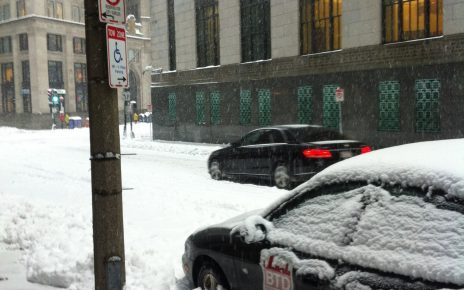 Boston Transportation Department Commissioner Thomas J. Tinlin has responded to recent press articles and letters from suburban politicians regarding the City of Boston proposal to reroute pass-through hazardous material trucks to Route 128 from city streets (including the North End / Waterfront / Downtown). The public comment period has now ended and the routing decision resides with the Massachusetts Department of Transportation (MassDOT).
Boston Transportation Department Commissioner Thomas J. Tinlin has responded to recent press articles and letters from suburban politicians regarding the City of Boston proposal to reroute pass-through hazardous material trucks to Route 128 from city streets (including the North End / Waterfront / Downtown). The public comment period has now ended and the routing decision resides with the Massachusetts Department of Transportation (MassDOT).
Although community response in the suburbs has been limited, politicians in some areas have voiced objections to Boston’s proposal in the following press articles.
- Globe: Boston hazmat rerouting draws fire from other communities
- Clark: Keep hazardous materials off 93/128
- Somerville state officials speak out on re-routing HAZMAT trucks
- Neeham: Officials Ask for Hazmat Route Delay, Mull Video Surveillance
The main issues raised in the above articles are the suburban emergency response capabilities (or lack thereof), Route 128 traffic congestion and the longer travel distance. There seems to be a misunderstanding (or false alarm) by some suburban officials that hazmat trucks would travel on their side streets rather than designated highways.
In response to the articles and letters by suburban politicians, Boston Transportation Commissioner Thomas Tinlin has issued the following letters.
- This first letter to the editor was sent to the Boston Globe in response to the article written by State Senator Katherine Clark and published online.
- This second letter was sent to the Somerville Journal and the Cambridge Chronicle in response to the article written by State Senator Pat Jehlen and State Represenatives Denise Provost, State Representative Carl Sciortino and State Representative Tim Toomey.
A few excerpts from BTD’s Thomas J. Tinlin’s letters:
In light of the comprehensive risk study prepared by Battelle and presented to MassDOT, it is unconscionable for the status quo to continue as it leaves Boston’s citizens and visitors to bear the risk of a major incident when a clearly safer alternative route is available.
It is important to remember that Boston is not just the hub of the region’s business community, it is home to over 600,000 residents, and that population nearly doubles every day with commuters, visitors and tourists. The North End is one of our most densely populated neighborhoods. Among other amenities, it offers schools, a public swimming pool, athletic fields, houses of worship, a skating rink, a community center and senior citizen housing developments.
As for practicality, yes, routes 128 and 93 suffer from significant congestion, but there is no denying that gridlock is a common occurrence in Boston as well. The difference is that routes 128 and 93 were built to carry interstate truck traffic whereas Boston’s local streets were never intended for this purpose.
Like Boston, routes 128 and 93 are already carrying hazmat vehicles, and any future emergencies on these highways would be handled in the same manner that they are handled now. Fire departments state-wide have the ability to handle a lone isolated tanker truck accident on an open highway. The problem becomes more complex, however, in a compact location like the North End where an entire area could be lost from one single incident.



